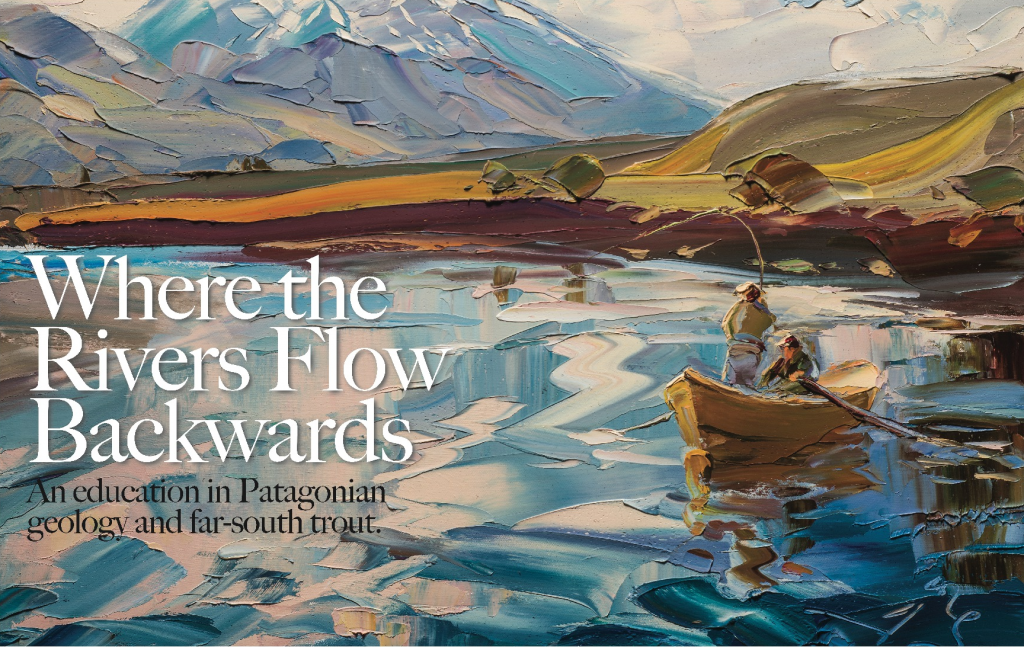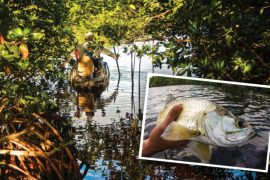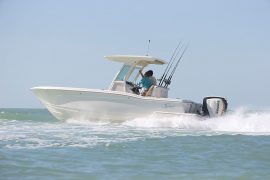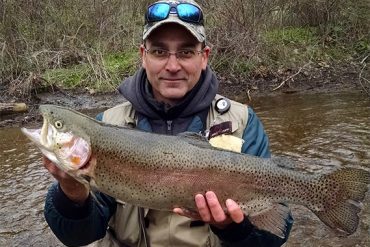
An education in Patagonian geology and far-south trout.
[by Miles Nolte]THE GRAVEL BAR GLOWS YELLOW. Its medium-sized cobbles look like thousands of petrified honeydews extending to midriver, a blue trough of deep water lining the far edge. Grinning broadly, Argentine guide Gustavo Segovia drops me off at the upstream end of the bar with instructions to walk slowly and look for big brown trout. This river, the Rio Rivadavia, is only four miles long and flows between two vertically walled basin lakes—Lago Rivadavia and Lago Verde—in the middle of Los Alerces National Park. The deeper water is actually turquoise, and immense peaks veined with residual snow stud the horizon. If not for the 30-mile-perhour downstream wind and the tendrils of didymo waving in the shallows, I’d have to call BS on this whole scene. It’s a movie set, a glossy ad page, some sort of computer-generated projection from that James Hilton novel. And yet here I am, slipping slightly on rock snot as I exit the boat.
The evenly paced water 10 to 20 feet from shore looks optimal for fish. But all I can see are sunpainted rocks with just enough watery distortion to keep me guessing: Was that a fin?
I nearly step on the first brown trout. Two more paces and I could literally toe the fish’s jutting lower jaw. Why would a 20-inch brown trout lie in water barely deep enough to cover its back under a bluesky sun? Is that fish sick? I freeze midstep, try to reverse course in awkward…





